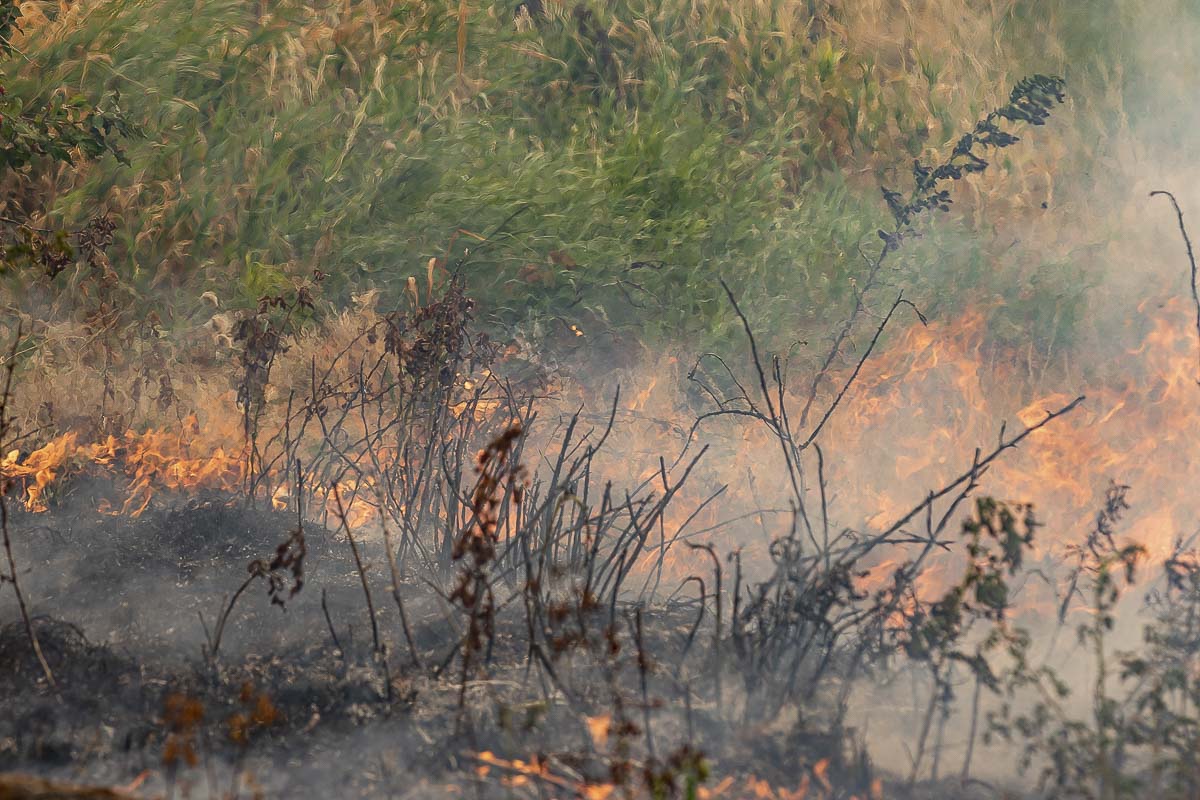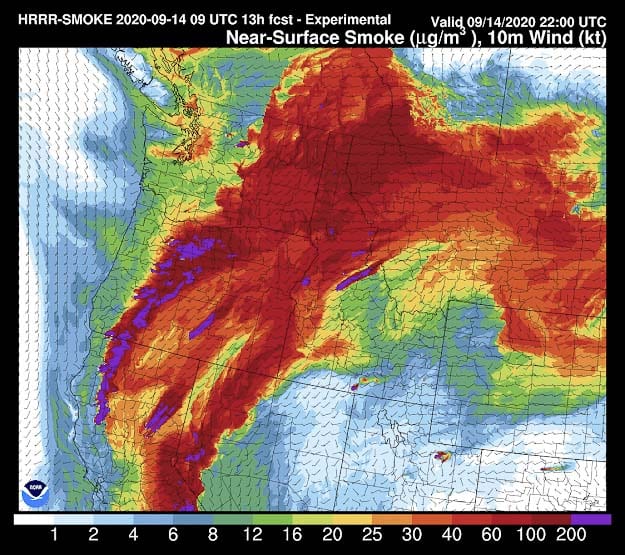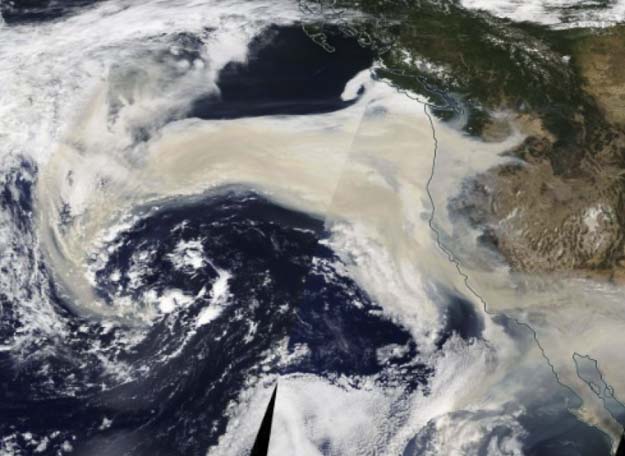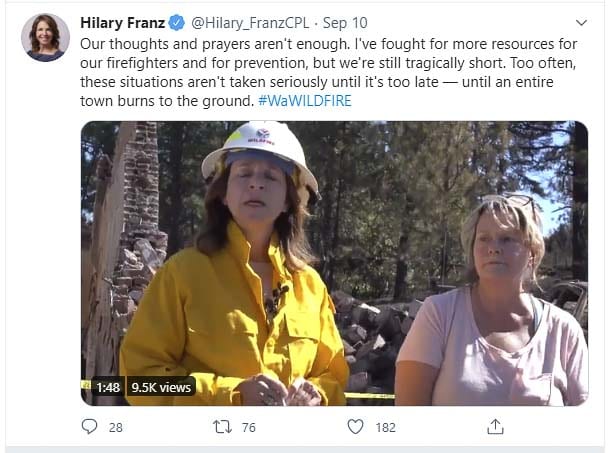UW Climate Scientist Cliff Mass disputes governors’ claims of ‘climate fires,’ stating poor forest management is the real cause of the fires
Gov. Jay Inslee, speaking on ABC’s “This Week’’ Sunday news show, referred to the fires ravaging the Pacific Northwest by saying “these are climate fires.” Oregon Gov. Kate Brown echoed the message during an appearance on CBS “Face The Nation,’’ also blaming the fires on climate change.
But what does University of Washington climate scientist Cliff Mass say? What does Washington Public Lands Commissioner Hillary Franz say? How rapidly will the air quality improve?

Mass explained that a temperature inversion is trapping the smoke close to the ground.
“Cold, dense air is trapping the smoke near the surface. The atmosphere is having a very hard time moving it out,” Mass explained on Seattle’s John Carlson KVI radio show. “Think of an inversion as a barrier to atmospheric motions, a cap to the vertical movement of air. It prevents the smoke from mixing out vertically.”
Mass expects things to get a little better, but they won’t improve much until later this week.

As to the larger cause of the current fires, Mass says Governors Inslee and Brown are wrong in blaming climate change.
“I don’t think it’s true,” claimed Mass, who said he’s doing research on it right now, with funding from the Nation Science Foundation. He will look at wildfire meteorology and the climate connection.
Mass indicated the fires in Oregon were caused by strong, easterly winds that are extremely unusual for this time of year. “This is a record-breaking, two-day event,” Mass said. “In fact, all the major fires on the west side of the Cascades are always associated with easterly winds.
“Our climate simulations suggest that these easterly winds will weaken under global warming, will weaken under climate change,’’ Mass said. “So, actually he (Inslee) has it 180 degrees wrong, at least for the kind of western side fires.”

Mass went on to explain that current fires in Washington state were primarily grass and shrubs.
“Almost all the acreage had nothing to do with forests.” he explained. “It was the extraordinarily strong winds from the north that helped produce these big grass fires. The climate change correlation is very weak.”
Mass points to poor forest management as a big contributor to these huge fires.
“It is certainly true that we’ve mismanaged our forests,’’ he said. “Go to the UW Department of Forestry, go to the seminars, read the literature. We have mismanaged our forests.’’
Mass pointed out that forests are overgrown and are full of all kinds of slash and other material.
“I mean the forests are in trouble and that’s true on the whole West Coast,’’ he said. “That is a key part of the problem.”
Washington State Public Lands Commissioner Hilary Franz has advocated for more resources to fight fires since she was elected in 2016. More importantly, she warned about the need to better manage forests.
“Washington’s forests are in a critical state. Millions of acres are overcrowded, filled with diseased and dying trees, and at high risk for catastrophic wildfires,” Franz wrote in a “20-year Forest Health Strategic Plan” in 2019.

Through tears, Franz made a public plea during a press conference last week to take this issue seriously.
“There is little resources to be found in the air as well as on the ground,” Franz said. “This is why this state needs to make this day an absolute priority to never let this happen again.”
The introduction to the strategic plan stated: “Throughout the western United States, including Washington State, forest health has been in decline for several decades. At a broad scale, the decline can be attributed to past management practices, including past fire management practices, that have resulted in uncharacteristically overstocked forests.”
The Franz strategic plan stated:
“Wildfire in forests composed of widely spaced, mature trees with minimal ladder fuels in the understory is more likely to remain on the ground. Large diameter, thick-barked trees with few lower branches are more likely to survive this type of fire. A low intensity ground fire has less risk of igniting structures, especially those with defensible space. This fire-adapted stand structure is maintained naturally through frequent fire return intervals or through management activities such as thinning, pruning, and/or prescribed burning.”
Todd Myers of the Washington Policy Center also added his perspective. He notes that Gov. Inslee has no results to show for all his talk.
“In his first term, he set a goal to ‘increase the average annual statewide treatment of forested lands for forest health and fire reduction from 145,000 to 200,000 acres by 2017.’ How did the state do? We don’t know, because the goal was removed from Results Washington when it was clear the state would probably not hit the target.
“In September 2016, the Department of Natural Resources confirmed they were not on target to administer the desired forest health treatments in Eastern Washington.
“Today, Results Washington lists no forest health goals, but simply says, “Washington is working to restore forests and enhance forest resiliency to severe wildfires, drought, and insect and disease outbreaks.”
A spokesperson for the Oregon Department of Forestry (ODF) agreed the state needs to do more to care for forests. The ODF indicated management tools, like cutting down trees or doing prescribed burns, lower the risk of major spread.
“Throughout the Pacific Northwest, there’s been a slowdown in active land management, and that’s what’s allowed a lot of these fuels to accumulate,” John Bailey, a professor at Oregon State University, told KATU for a news report. “Hindsight is 20/20, and we can look at what we could’ve done and should’ve done, and that kind of thing.”
The fuels he mentioned are the trees and brush in the woods. Bailey said prescribed burns cut down on the brush that serve as an accelerant for wildfires.




